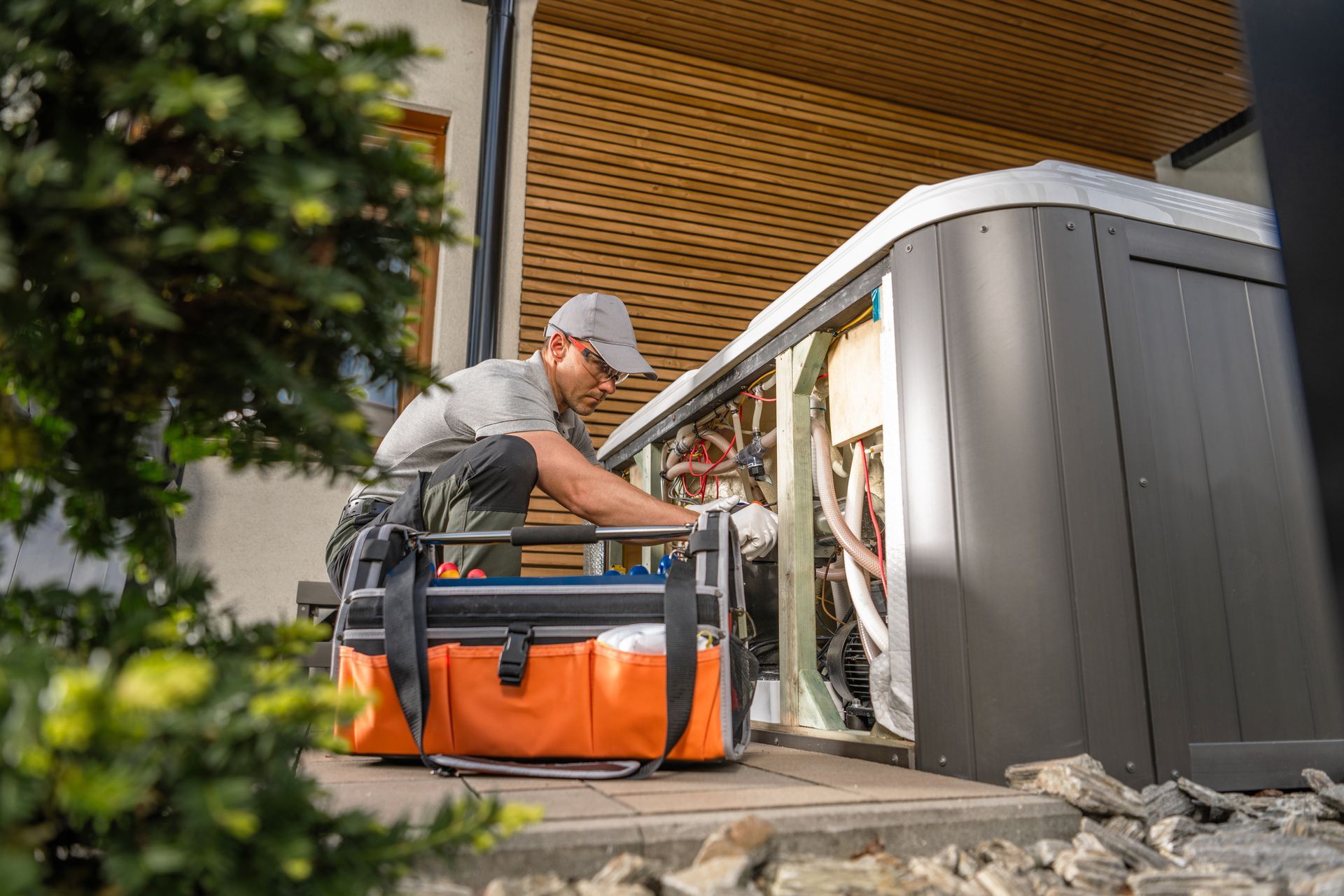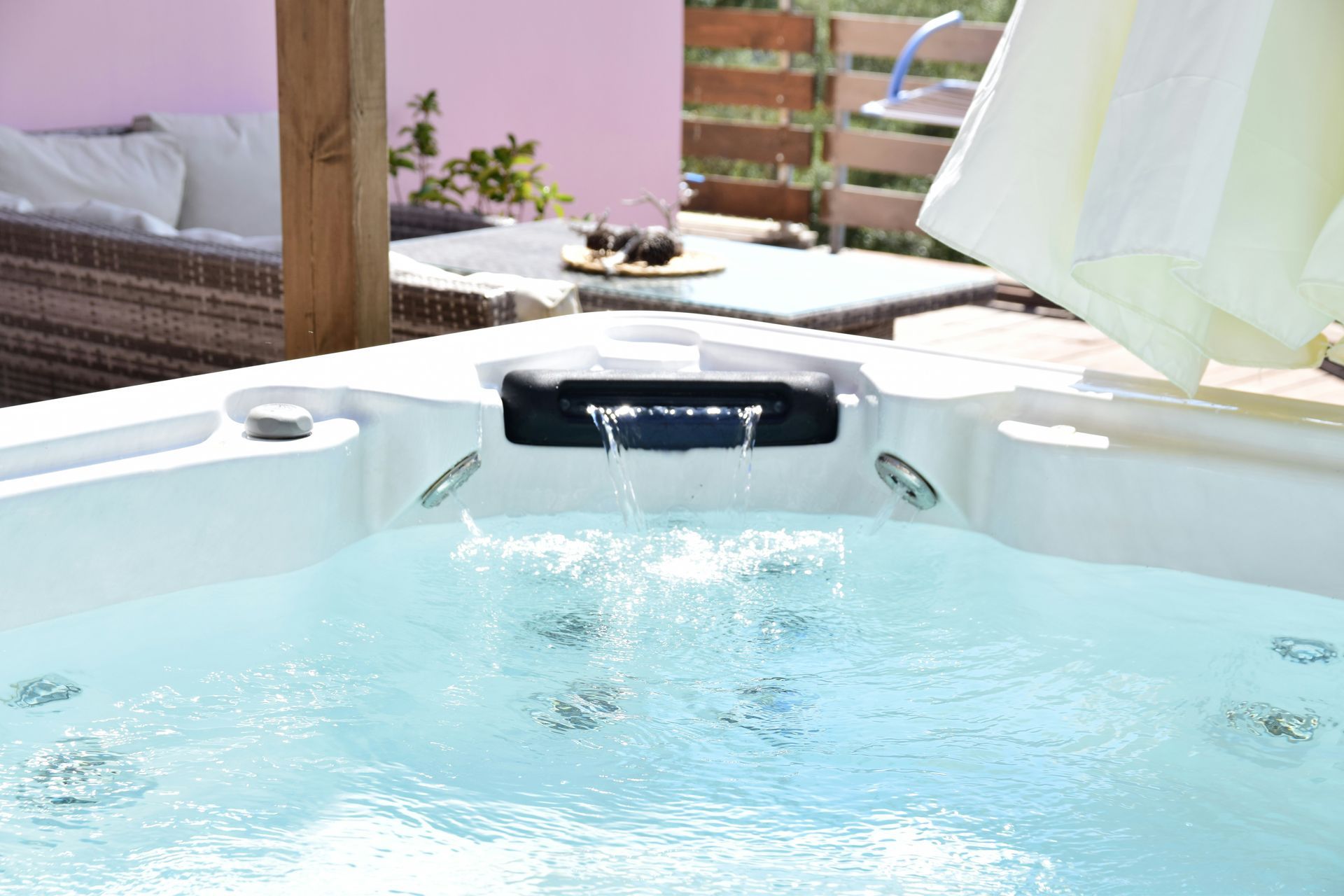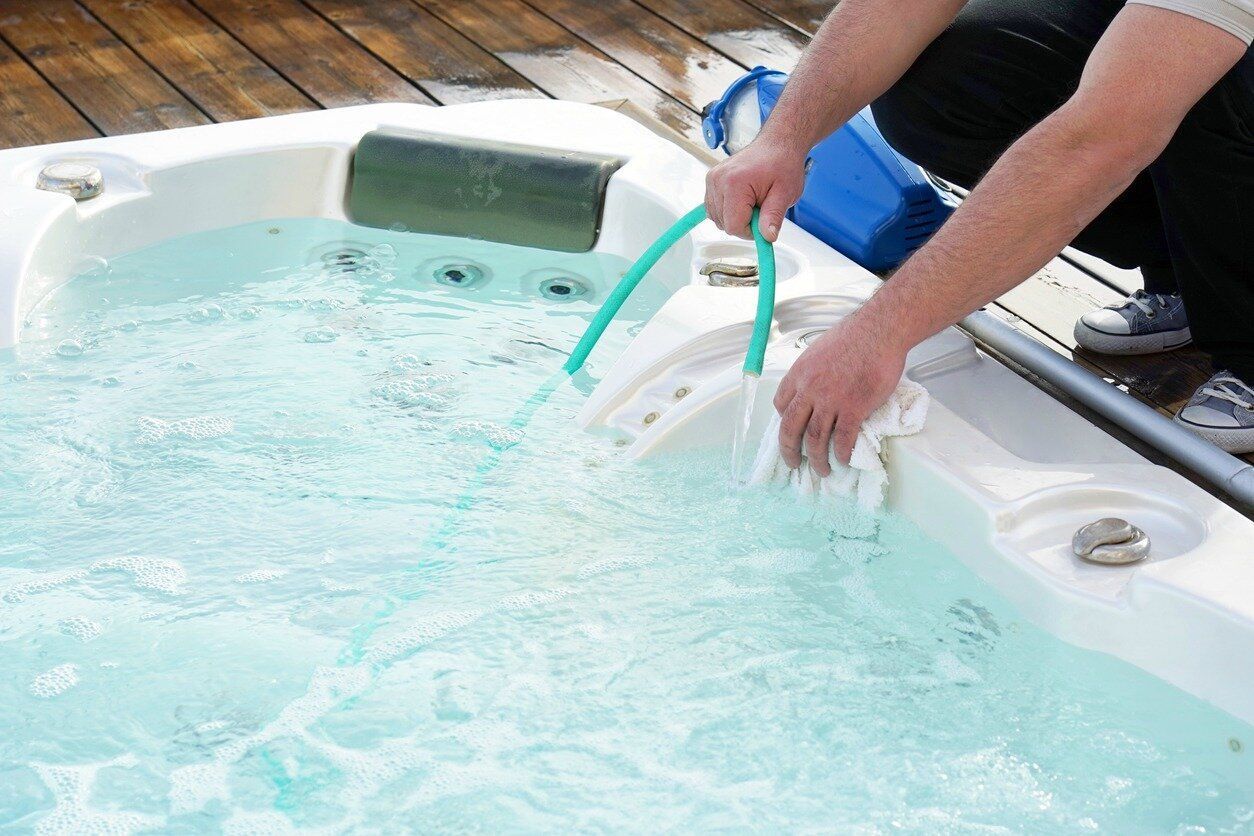Hot Tub Heater Repair: Why Your Spa Isn't Heating Properly
When your hot tub stops heating properly, it can turn a relaxing evening into a frustrating experience. Understanding common hot tub heating issues and knowing when to tackle repairs yourself versus calling a professional can save you time, money, and stress. From simple filter problems to complex hot tub heating element replacement, identifying the root cause is the first step toward getting your spa back to optimal temperature.
Key Takeaways
- Hot tub heating problems often stem from dirty filters, water flow issues, or electrical components
- Temperature sensor malfunctions can cause your heater to cycle incorrectly or shut down completely
- Regular maintenance and proper water chemistry prevent many common hot tub heater problems
- Professional diagnosis may be necessary when dealing with electrical components or hot tub heating element replacement
- Safety should always be your priority when working with electrical systems in water environments
- Understanding your warranty coverage can help you make informed decisions about hot tub heater replacement
Common Causes When Your Hot Tub Won't Heat
When your hot tub stops heating, you're dealing with one of several possible culprits. Understanding these common issues helps you pinpoint the problem faster and decide whether you can handle the fix yourself or need professional assistance. Most heating problems fall into three main categories that affect thousands of spa owners every year.
Water circulation problems cause the majority of heating failures you'll encounter. Your heater depends on a consistent water flow to operate safely and efficiently. When debris clogs your filters or water levels drop too low, built-in safety systems automatically shut down heating to protect expensive components from damage. These safety mechanisms save you money in the long run, even though they're frustrating when you want to use your spa.
The most frequent circulation issues include:
- Dirty or clogged filter cartridges that restrict water movement
- Low water levels that prevent pumps from operating properly
- Air trapped in plumbing lines that interrupts consistent flow
- Blocked suction fittings or skimmer baskets full of debris
Electrical issues create the second major category of heating problems. Your hot tub's electrical system is more complex than most people realize, with multiple safety circuits designed to protect both equipment and users. When circuit breakers trip repeatedly or GFCI outlets won't stay reset, you're seeing these safety systems in action. The heating element itself may also fail over time, particularly in areas with hard water that accelerates mineral buildup and corrosion.
How to Diagnose Hot Tub Heating Issues
Diagnosing heating problems doesn't require advanced technical skills, but it does benefit from a systematic approach. Think of yourself as a detective gathering clues to solve the mystery of why your spa won't warm up. Start with the simplest possibilities first, since they're often the culprit and the easiest to fix. Most heating issues reveal themselves through obvious symptoms if you know what to look for.
Begin your troubleshooting with a visual inspection of key components. Check your filter cartridges first, as they're involved in nearly every heating problem. Pull them out and examine them in good light. You're looking for obvious discoloration, buildup of oils or debris, or that telltale slimy feeling that indicates bacterial growth. Even if they don't look terrible, remember that microscopic blockages can restrict flow enough to trigger safety shutoffs.
Your basic diagnostic checklist should cover:
- Filter condition and cleanliness level
- Water level in relation to skimmer openings
- Circuit breaker positions and GFCI function
- Error codes displayed on control panel
- Water chemistry balance including pH and sanitizer levels
Pay special attention to your control panel display, as modern hot tubs provide surprisingly detailed error information. Many owners ignore these codes, but they're designed to point you directly toward the problem area. Write down any codes you see and consult your owner's manual or manufacturer's website for specific meanings. Some codes indicate simple fixes like dirty filters, while others signal more serious issues requiring professional attention.
Water Flow and Circulation Problems
Understanding water flow is crucial because your heating system won't operate without adequate circulation. Think of your hot tub's plumbing like the circulatory system in your body: when flow gets restricted, everything downstream suffers. Hot tub manufacturers install flow switches specifically to protect heating elements from running dry, which would destroy them in minutes. These safety devices save you hundreds or thousands in repair costs by shutting down heating when flow drops below safe levels.
Flow problems extend far beyond dirty filters, though that's where most issues start. Your spa's circulation system is more complex than it appears, with multiple potential restriction points that can throttle water movement. Air bubbles trapped in plumbing lines create particularly stubborn problems because they're invisible until you bleed the system properly. Low water levels affect pump performance dramatically, even when the water level looks adequate to casual observation.
Common flow restriction points include:
- Filter cartridges clogged with oils, debris, or bacterial growth
- Skimmer baskets packed with leaves and floating debris
- Suction line blockages from toys or equipment left in spas
- Air pockets preventing proper pump priming and operation
- Pump impeller damage reducing circulation capacity
Restoring proper flow requires a methodical approach that addresses each potential restriction point. Start with the obvious culprits like filters and skimmer baskets, then work your way through the system systematically. Many spa owners are surprised to learn that their circulation pump may run continuously for filtration while a separate pump handles heating duties. Understanding your specific system layout helps you focus troubleshooting efforts on the right components.
Hot Tub Heating Element Problems and Replacement
Your hot tub heating element works harder than you might realize, converting electrical energy into heat while being constantly exposed to water, chemicals, and mineral deposits. Like any hardworking component, heating elements eventually wear out and need replacement. The good news is that element failure usually provides clear warning signs, giving you time to plan for repairs rather than facing sudden complete breakdowns.
Heating element problems typically develop gradually over months or years. You might notice your spa takes longer to reach desired temperature, or the heater cycles on and off more frequently than usual. Some elements develop hot spots due to mineral buildup, which creates uneven heating and eventual failure. In severe cases, failed elements can trip circuit breakers immediately when the system tries to start, leaving you with no heating capability at all.
Signs your heating element may need replacement include:
- Significantly longer heating times than when spa was new
- Circuit breaker trips when heating system activates
- Complete loss of heating despite normal water flow
- Unusual noises from heating assembly during operation
- Visible mineral buildup or corrosion on the element housing
Hot tub heating element replacement involves more than simply swapping parts. Professional technicians test electrical connections, verify proper element sizing for your specific spa model, and often recommend replacing related components like temperature sensors and gaskets during the same service call. This comprehensive approach prevents callbacks and ensures reliable operation for years to come. The process requires specialized tools and knowledge of electrical safety procedures, making professional installation the smart choice for most spa owners.
Common Hot Tub Heating Problems and Solutions
| Problem | Likely Cause | Solution |
|---|---|---|
| Hot tub not heating at all | Dirty filters or electrical issues | Clean filters, check breakers |
| Heater cycles on and off frequently | Faulty temperature sensor | Replace temperature sensor |
| Water heats slowly or inconsistently | Mineral buildup or weak element | Professional element replacement |
| Breaker trips when heater starts | Failed heating element | Emergency service call required |
When to Call Professional Hot Tub Repair Services
Knowing when to tackle repairs yourself versus calling professionals can save you both money and headaches. While simple hot tub maintenance like filter cleaning falls within most homeowners' comfort zones, heating system repairs often involve electrical work that requires specialized knowledge and safety equipment. The decision becomes easier when you consider the potential consequences of mistakes in wet electrical environments.
Professional technicians bring more than just technical skills to your repair project. They carry specialized diagnostic equipment like digital multimeters, amp clamps, and insulation resistance testers that can identify problems invisible to visual inspection. More importantly, they understand electrical codes, safety protocols, and manufacturer specifications that ensure repairs meet all legal and warranty requirements. Their experience with multiple spa brands helps them spot recurring issues and recommend preventive measures.
Consider professional service when you encounter:
- Repeated heating failures despite replacing obvious components
- Electrical problems involving circuit breakers or GFCI outlets
- Complex diagnostic requirements beyond basic visual inspection
- Warranty coverage that requires professional installation
- Safety concerns about working with electrical components
The cost of professional service often proves worthwhile when you factor in their ability to diagnose problems quickly and access genuine manufacturer parts. Many heating element failures, for example, stem from related component problems that experienced technicians identify and address during the same visit. This comprehensive approach prevents frustrating callbacks and ensures your investment in repairs delivers long-term reliability.
Preventing Hot Tub Heating Problems
Prevention remains your best strategy for avoiding heating problems and the inconvenience they cause. Most heating failures develop gradually over weeks or months, giving you plenty of opportunity to catch problems early through regular maintenance. The key is establishing simple routines that become second nature, much like checking your car's oil level or cleaning your home's air filters.
Filter maintenance stands out as the single most important prevention measure you can take. Clean filters ensure adequate water flow, which protects your heating element and prevents safety shutoffs. The frequency of cleaning depends on your usage patterns and bather load, but every two weeks provides a good starting point for most households. During heavy usage periods like holidays or parties, you may need to clean filters weekly or even more frequently.
Your preventive maintenance routine should include:
- Regular filter cleaning and rotation every 1-2 weeks
- Weekly water chemistry testing and adjustment
- Monthly inspection of the equipment area for unusual sounds or leaks
- Quarterly filter replacement based on manufacturer guidelines
- Annual professional system inspection and tune-up
Water chemistry management protects your entire heating system from premature wear and damage. Balanced water prevents the corrosion and scaling that destroy heating elements and other expensive components. Pay particular attention to pH levels, as water that's too acidic or alkaline accelerates equipment deterioration significantly. Proper sanitizer levels prevent bacterial and algae growth that can clog filters and restrict water flow.
Frequently Asked Questions
Why is my hot tub heater not heating even though it's getting power?
The most common cause is restricted water flow due to dirty filters or low water levels. Hot tub heaters have safety switches that prevent operation when insufficient water flows through the heating chamber, protecting the element from overheating and damage.
How much does hot tub heating element replacement typically cost?
Professional hot tub heating element replacement typically ranges from several hundred to over a thousand dollars depending on your spa model and local service rates. This cost usually includes the new element, labor, and any associated gaskets or fittings required for proper installation.
Can I replace a hot tub heating element myself?
While possible for experienced DIY enthusiasts, hot tub heating element replacement involves electrical work in wet environments and requires proper safety knowledge. Most manufacturers recommend professional installation to ensure safety and maintain warranty coverage on your equipment.
How often should I have my hot tub heater serviced?
Annual professional inspection helps identify potential issues before they cause complete heating failures. Regular filter maintenance every two weeks and proper water chemistry management between professional visits significantly extend heater life and prevent most common problems.
What are the warning signs that my hot tub heater needs repair?
Watch for signs like longer heating times, frequent cycling on and off, unusual noises from the equipment area, or tripped circuit breakers. Error codes on your control panel also indicate specific problems that require attention before they lead to complete system failure.
Final Thoughts
Hot tub heater repair requires a systematic approach to identify and address the root cause of heating problems. While some issues like dirty filters or tripped breakers are simple fixes, complex electrical problems and heating element replacement often require professional expertise to ensure safe and effective repairs. Regular maintenance, proper water chemistry, and prompt attention to warning signs help prevent many heating issues and extend the life of your spa equipment, keeping your hot tub ready for relaxation year-round.
Need hot tub heater repair? Our certified technicians provide fast, reliable service. Contact us today!
Reference:
https://www.cdc.gov/healthy-swimming/about/home-pool-and-hot-tub-water-treatment-and-testing.html








